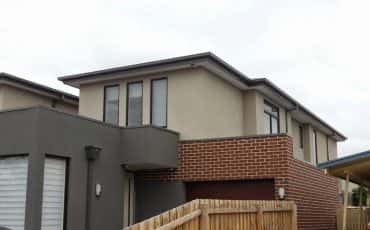Vicrendering is a family owned and run business based in the eastern suburbs. We canvas all of Melbourne, parts of Regional Victoria and Interstate areas, we have multiple teams to cover all aspects of the trade from that last minute job, insurance work to large commercial projects such as a retirement villages and spec homes.
Don't wanna be here? Send us removal request.
Text
Different Types of Rendering for Your Home

As the winter comes closer, your anxiety grows to keep a home warm and cosy. Moreover, you also worry about external elements like sunlight, wind, dust, and water that damage the beauty of your house. If you want to overcome this problem permanently then specialist rendering services are the ultimate solution to protect your property and make it durable.
The Two Prime Rendering
There are two main rendering –internal rendering and external rendering. Let’s learn a little more about these two.
Internal Rendering
Rendering your internal walls cost very less. It can be easily blended into with renovation of the house. It is going to be the perfect solution if you are already thinking of repairing your living room before winter arrives.
External Rendering
External rendering includes applying insulating render to the exteriors walls of your house. It is an expensive rendering service compared to internal rendering. This rendering provides aesthetic appeal to the entire house. Most of the people feel comfortable with internal rendering.
Various Types of Rendering
There are different types of forms of external rendering that include cement rendering, polymer rendering, acrylic wall rendering, and monocouche rendering are in great demand right now. Have a look at.
Cement Rendering
It is a simple and cheap option. But it is not as effective as you think. Cement rendering only gives a satisfying result when polymers are used otherwise your cement gets cracks by the time and paves the way for heat to escape easily from small cracks in your walls.
Polymer Rendering
A polymer rendering is an inexpensive solution. The polymer is added to cement and applied over the top of a wall.
Acrylic Rendering
Acrylic wall renders differ from other types. It can be very helpful against vapor. The acrylic renders include silicone, have self-cleaning components. Thus, they need less maintenance and you can keep your house attractive for a long time.
Monocouche Renders
This render is gaining popularity across Europe. It is an easy application and available in a bag. It can be applied as a spray. There is no need for extra painting as it is pre-pigmented. Besides, allow walls to take a breath with the help of a solitary coat.
Conclusion
If you want to render your house, then you have enough alternatives to shine your external walls. Each rendering has unique effects to make your house look attractive. Ultimately, it’s up to you what rendering you choose.
0 notes
Text
The Best Cladding for Houses
There are three main types of metal cladding systems; profiled sheeting, cassette panels and composite panels. These three choices offer the most concise cladding solutions to Architects and specifies here in the UK and overseas.
The most effective and concise way to classify metal-based cladding systems is by their method of manufacture. Best cladding for homes can fall into one of following three categories:
Profiled Sheeting
Cassette Panels
Composite Panels
Profiled sheeting is one of the most best cladding for homes panel systems and has been in use for decades. Steel or aluminum is normally used for profiled sheeting. It can be applied to both roof and walls, in each case the performance requirements vary.
On roofs the sheeting can be susceptible to greater solar gain; this can mean thermal movement which has implications for end laps between sheets and their fixings. The roof will also be subjected to foot traffic during both installation and routine maintenance. The finish therefore has to be designed for greater toughness, stability and to minimize corrosion. On walls, as they are more visible, the color fastness of the finish is more important.
A major factor in the success of profiled metal cladding systems was the development of self-drilling and tapping screws which enable the rapid and secure fastening of the sheets from one side.

Conventional bolts and hooks are much slower to install requiring access from both sides of the sheet. Most screws are carbon steel with some form of metallic or metallic and organic coating to improve durability. Washers and heads are incorporated in screw. The screw heads can be covered with plastic caps to match the color of the steel cladding system. There are many varieties of screw, of different lengths, cutting heads and thread pitch and depth, depending on the type of best cladding for homes the substrate to which it is attached and the type of insulation used in the cladding panel system.
There are a range of proprietary composite cladding systems available in the UK, generally there is little difference in the actual core and facing material, the major differences lie in the joints between panels, the range of sizes and the range of architectural features such as corners and curved panels that are available.
Panels can also be laminated; this process applies to the other core materials. Adhesive is applied to the steel faces and pre-formed slabs of insulation. The panels are then clamped together either in a press or by passing them through a series of rollers.
1 note
·
View note